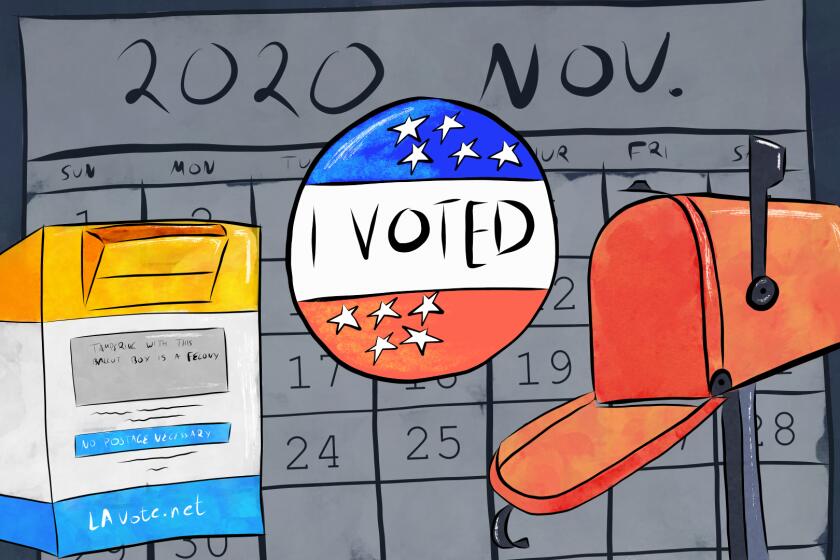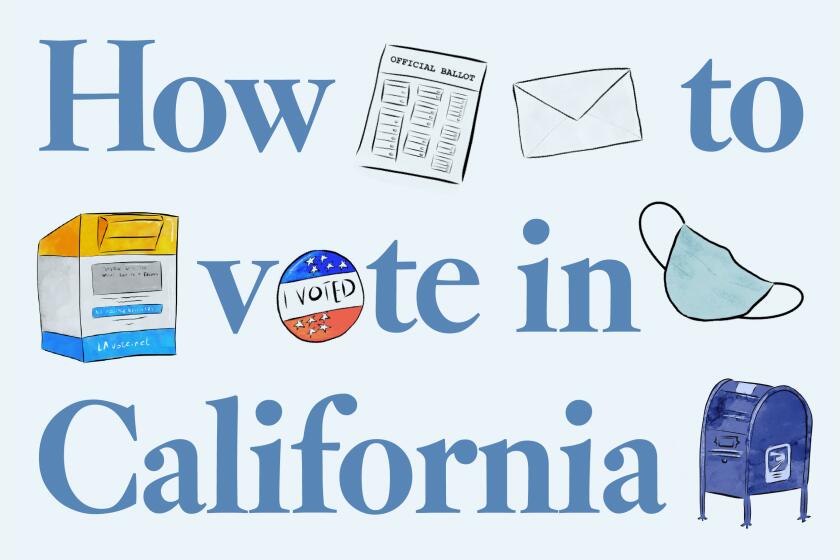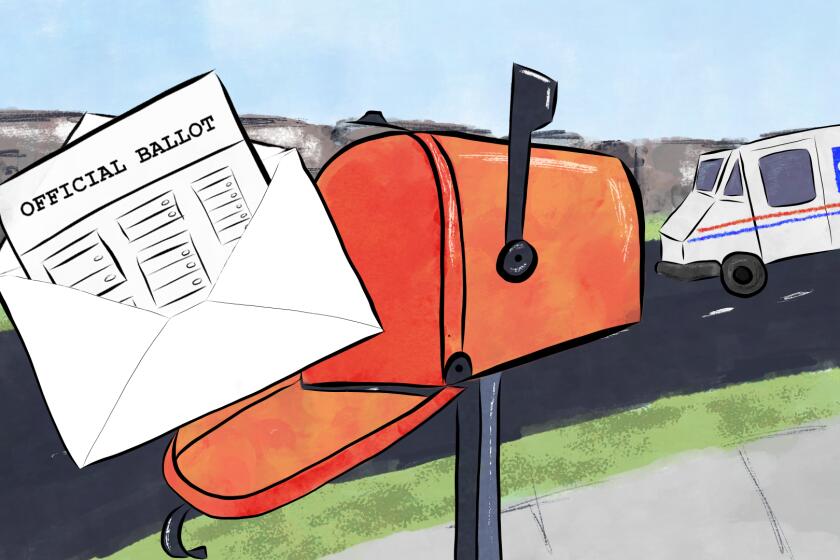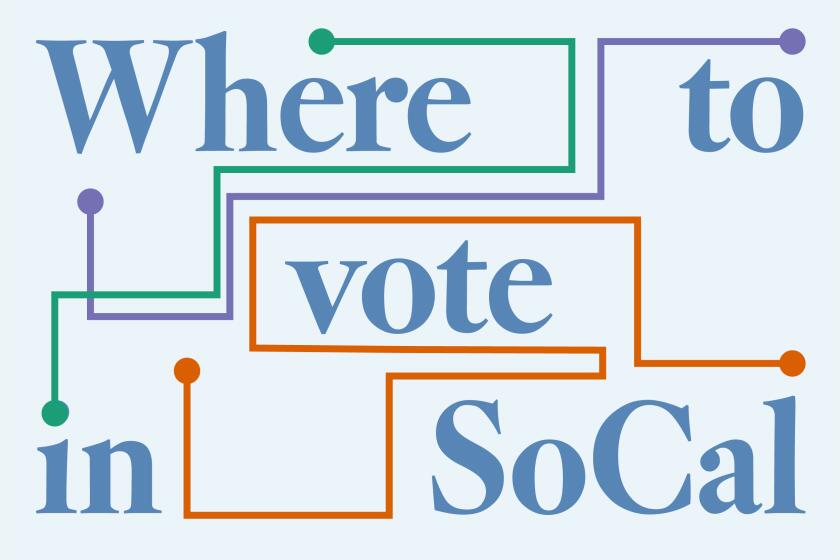How California will deal with voters who refuse to wear a mask on election day
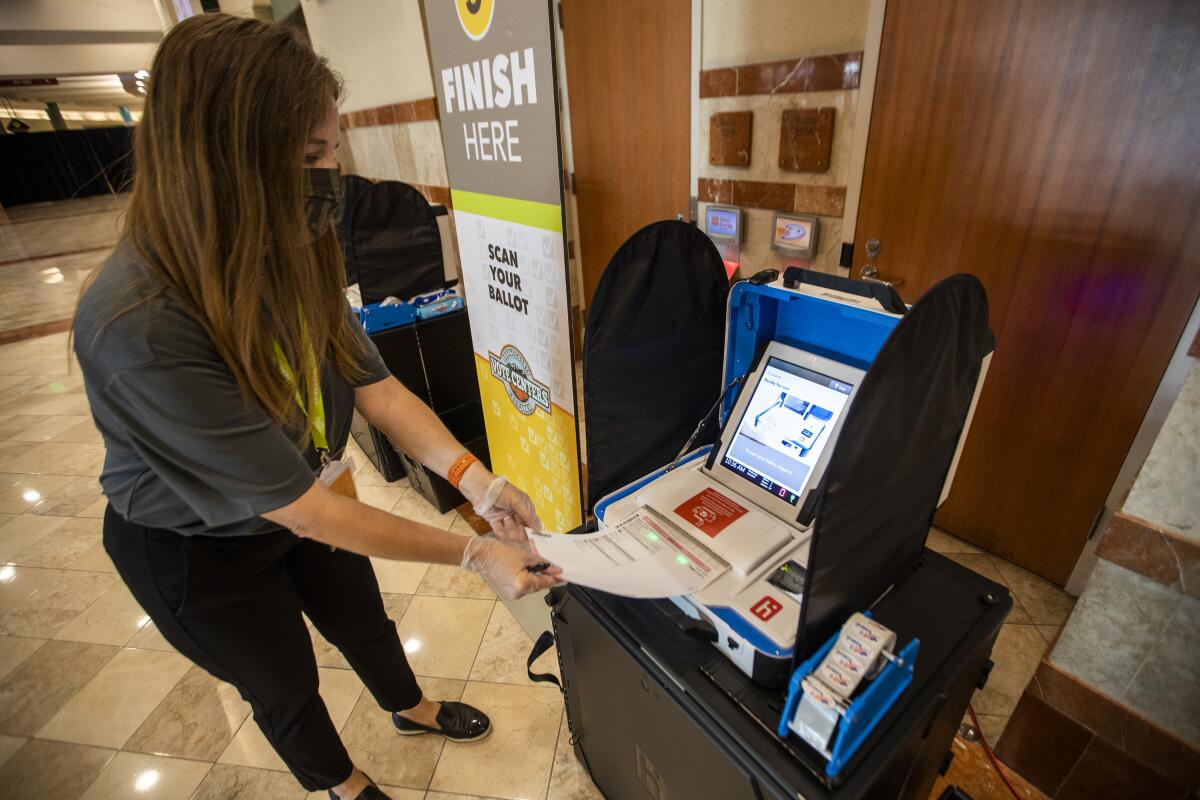
Voters who show up in Los Angeles County without a face mask will be escorted to an outdoor area, where a poll worker will hand them a ballot.
In Orange County, they will be put in a booth away from other voters.
San Bernardino and Riverside counties will offer face shields to the voters around an unmasked person.
Nowhere in California will a voter who refuses to wear a mask be turned away, election officials said.
In the final weeks before one of the most contentious presidential elections in recent history, as the country grapples with a once-in-a-lifetime pandemic, more than a million Californians have already voted by mail.
A polling station, with its potentially long lines, indoor setting and voting booths occupied by one person after another, poses a health risk, despite workers constantly wiping down surfaces and offering masks to anyone who forgot theirs.
But some people will still show up on Nov. 3, whether to witness the historic moment or to ensure their votes are cast amid worries about mail delivery and ballot counting delays. Poll workers have been instructed to help everyone cast a ballot — even those who insist on proceeding without a mask.
Like so much else this year, mask-wearing has become politically hazardous terrain, a mandatory public safety measure to some and an offensive government overreach to others.
Anxious to avoid dramas like those involving irate, maskless supermarket customers that have been shared countless times on social media, state election officials have issued detailed guidelines for keeping voters safe while minimizing confrontation.
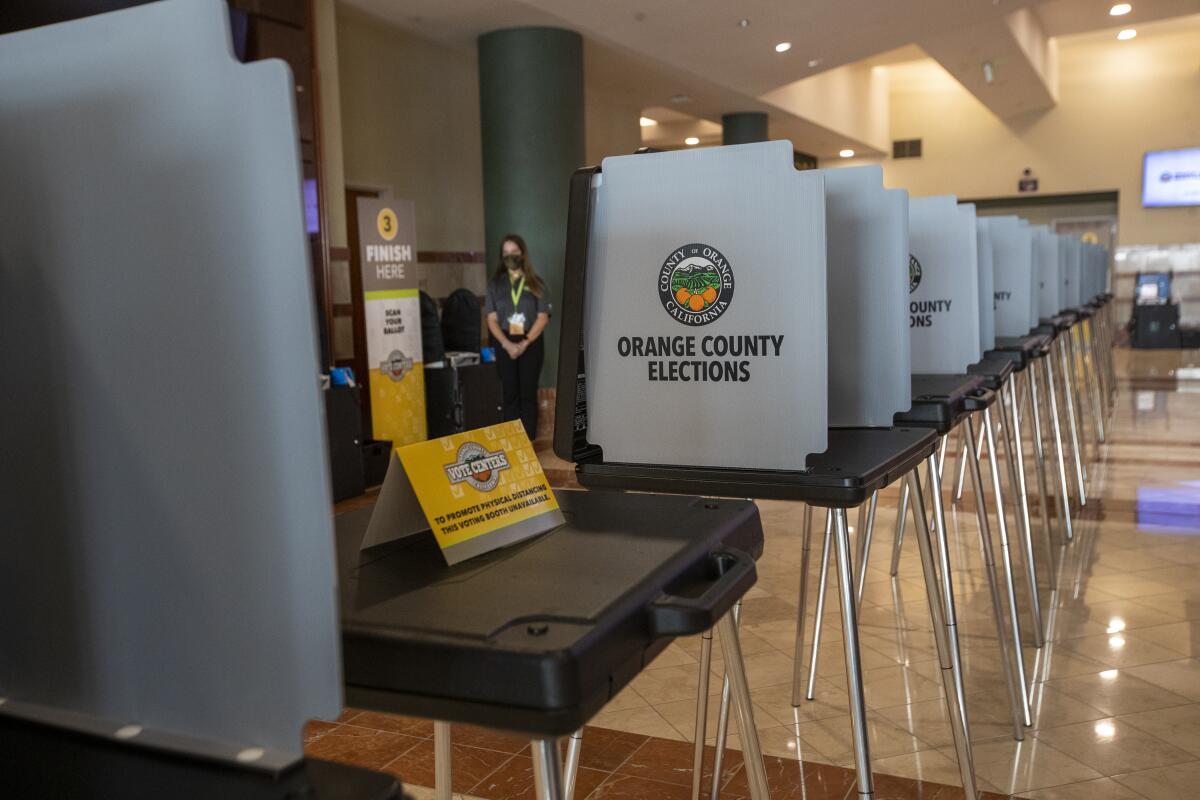
In the absence of masks, social distancing is the primary way to avoid coronavirus spread, note the guidelines from Secretary of State Alex Padilla’s office to county election officials, last revised on Aug. 27. The maskless person should be assured that he or she will still be allowed to cast a ballot and taken to a booth with plenty of space around it.
Poll workers should be trained in de-escalation techniques such as using a calm voice and body language that convey respect for the person’s right to vote. “Intense conversation and shouting” could further endanger others by spraying droplets, the guidelines note.
“The right to vote is of utmost importance,” the guidelines say. “Even voters neglectful of important health and safety precautions must be allowed to vote if they enter a voting location.”
Welcoming unmasked people into polling stations is a notable departure from state rules requiring face coverings in all indoor public spaces, such as stores, buses and hospitals. Those rules can be superseded by guidelines such as the ones from the secretary of state.
The constitutional right to vote is not absolute. In some states, felons are prohibited from voting. The U.S. Supreme Court has recently upheld legislation in some states requiring a photo ID to vote — arguably a more onerous hurdle than wearing a mask, said Jonathan Adler, a law professor at Case Western Reserve University.
Restricting in-person voting for public health reasons would probably be legal, as long as other options, such as mail-in ballots, are available, Adler said.
Turning away unmasked voters would be analogous to other polling place bans like those on guns or campaign advertising, said Rick Hasen, a UC Irvine law professor.
But California election officials have decided not to tangle with voting rights, despite the risk that unmasked people could transmit the coronavirus to poll workers and fellow voters.
Sam Mahood, a spokesman for the secretary of state’s office, said the guidelines for county election officials are intended to ensure safety while allowing everyone to vote in-person.
“The Secretary of State’s office views voting as a foundational constitutional right for citizens,” Mahood said in a statement.
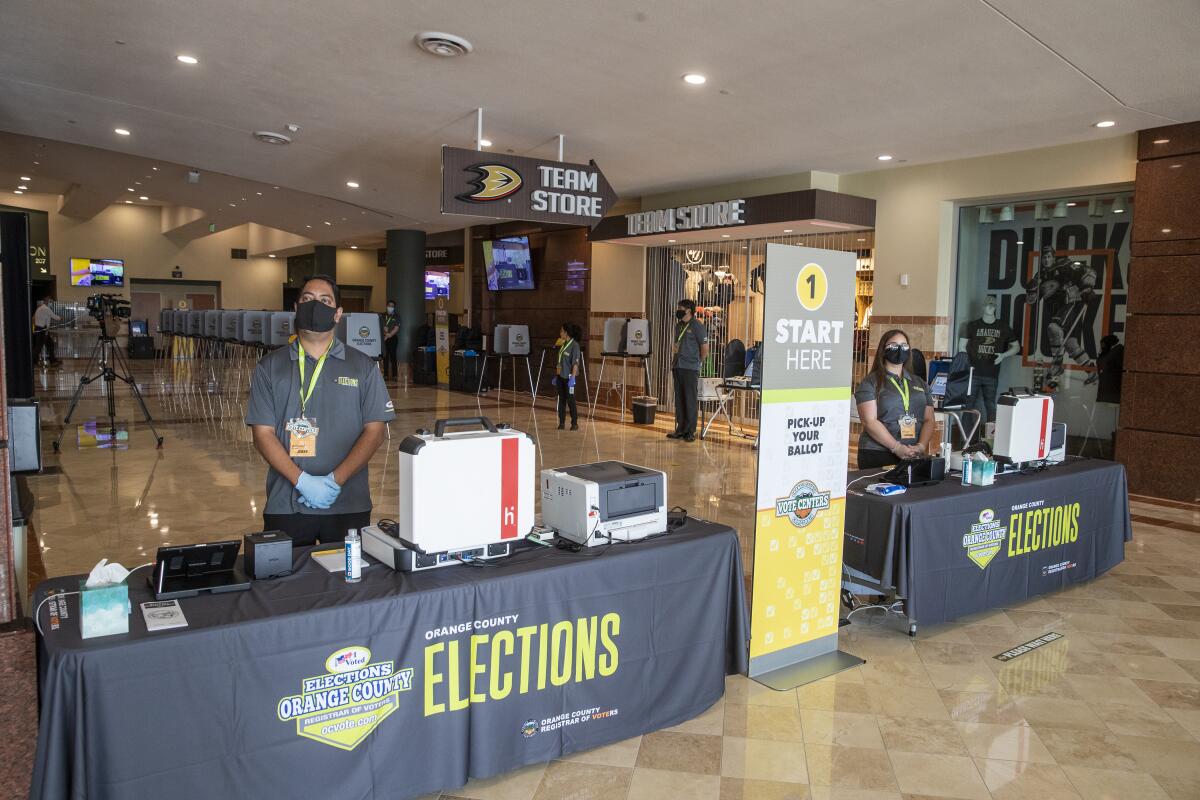
Annabelle de St. Maurice, co-chief infection prevention officer at UCLA Health, said the riskiest part of voting will be the time spent in line. She recommends that people consider alternative methods like mail-in or early voting.
“The highest risk will be waiting in line because you’ll potentially be clustered around people for a long time,” De St. Maurice said. “The average time someone spends at a voting booth is pretty short, so that would be a brief interaction and should be low risk.”
Problems could occur if many unmasked voters show up at once and there are not enough poll workers to assist them, she said.
When voters go to the polls on Nov. 3, they will probably see tape on the ground for social distancing, booths with ample space between them and hand sanitizer at every turn. In addition to neighborhood polling stations, they can vote at sports arenas such as Dodger Stadium and Staples Center. The Honda Center in Anaheim will have a drive-through voting option.
County election officials have come up with various plans for dealing with unmasked voters, whether it is helping them cast their ballots outdoors or providing extra protective gear for people nearby.
In San Diego County, voters who refuse to wear a mask will be moved to a socially distanced outdoor booth reserved for nonmask wearers, said Registrar of Voters Michael Vu.
San Bernardino County Registrar Bob Page said poll workers will focus on the safety of voters near an unmasked voter by social distancing and providing face shields.
“If there’s an ability to spread out more, we’ll take advantage of that,” Page said.
Riverside County will follow a similar plan, registrar Rebecca Spencer said.
In Orange County, where mask debates and defiance of lockdown orders have ballooned during the pandemic, voting centers will be open for an extra day beyond the state-recommended four days, Registrar of Voters Neal Kelley said.
The county has prepared 300,000 each of disposable masks and pens for polling stations, in addition to adding more ballot drop boxes, prioritizing larger polling sites and placing unmasked voters in socially distanced booths.
But Kelley expects in-person turnout to be low. He said that in the March primary, 80% of Orange County voters turned in a ballot they had received in the mail.
“I don’t think there’s any reason to believe we won’t see 8 or 9 out of 10 voters do the same for the November election,” Kelley said.
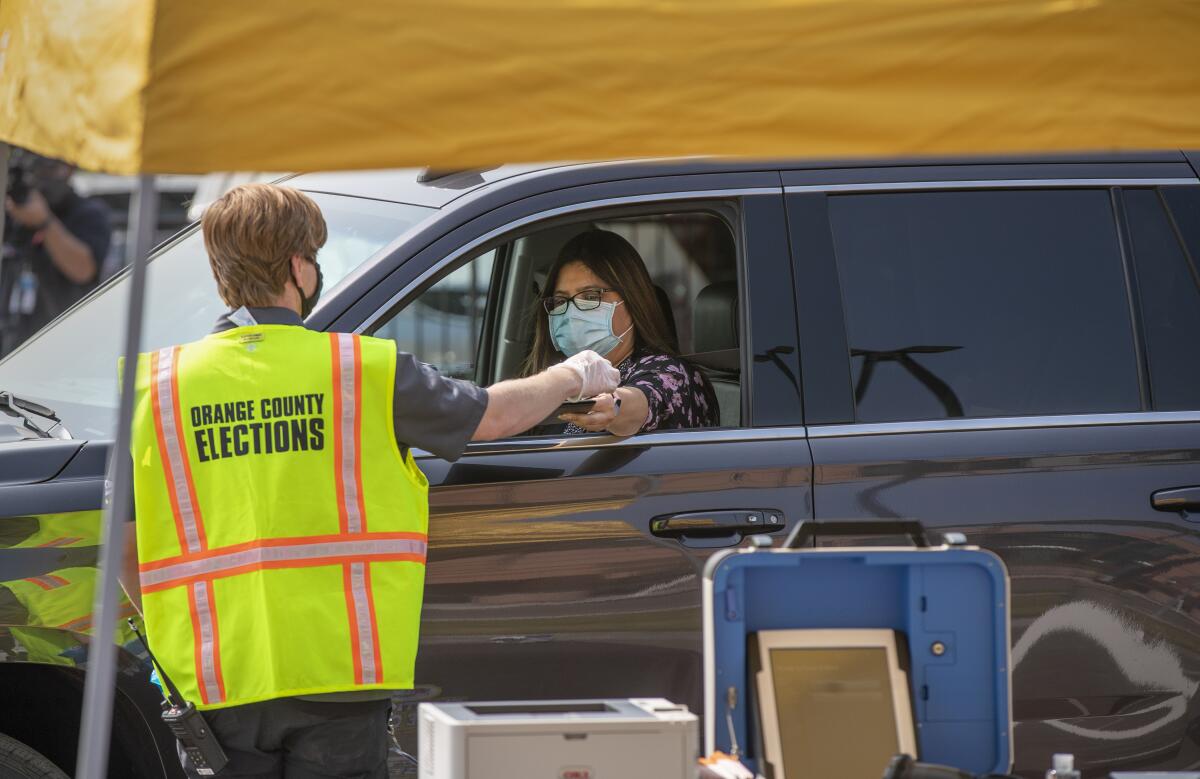
Still, some voters, like Christian Rothery of Anaheim, plan to cast their ballots in person.
Rothery enjoys the “whole ceremony” of going to the polls on election day and is worried about recent mail delivery issues.
He views in-person voting as no riskier than running errands during the pandemic. He said he will wear a mask and expects that most people will wear masks, as they do at the grocery store, and believes election officials will take precautions.
After months of staying at home during the coronavirus lockdown, Rothery said that voting in person will be especially meaningful this year.
“It’s a bit of normalcy,” said Rothery, 46, a finance manager who will vote for the Democratic presidential candidate, Joe Biden.
Anna Timm, a 31-year-old from Orange who works at Disneyland, said she will deposit her ballot in a county drop box.
“It’s the best of both worlds,” said Timm, who will vote for Biden. “You can take your time and you can vote in your pajamas.”
Besides, Timm will be busy on election day. She volunteered to be a poll worker after hearing there was a shortage.
She is not concerned about dealing with unmasked voters.
“I already have a lot of customer service experience, including stressful situations and even responding to various emergencies, from years of working in theme parks, so between that and our … training, I feel pretty prepared,” she said.
Temple City resident Carrie Chan, 44, said she planned on wearing a mask to vote in person. The paralegal planned on voting for President Trump at a polling center out of her distrust for mail-in voting.
“We live in America where we have the freedom of choice. I don’t think we should mandate what people do,” Chan said. “I’ll wear my mask and keep my distance, but that’s not something we can force others to do.”
More to Read
Sign up for Essential California
The most important California stories and recommendations in your inbox every morning.
You may occasionally receive promotional content from the Los Angeles Times.
